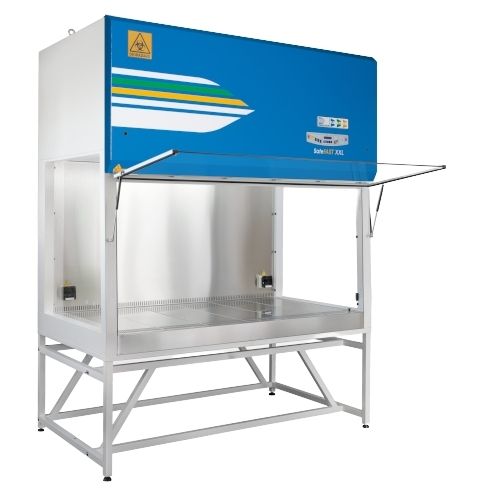10 Top ways to improve sustainability in your lab: Reduce, Re-use, Recycle
To quote Sir David Attenborough, “anyone who thinks that you can have infinite growth in a finite environment is either a madman or an economist”. I assume, dear reader, that you are neither, but I shall leave that for you to decide.
There is always a drive to review how our laboratories can work efficiently whilst exerting less negative impact on our environment. This article suggests 10 ways in which your laboratory could easily and innovatively improve your sustainability and reduce your carbon footprint.
-
Take advantage of suppliers who offer consumable recycling schemes

How waste is disposed of by a laboratory can be a significant indicator of its performance in terms of sustainability. Appleton Woods are a licensed waste carrier and offer recycling of pipette tip racking and are developing a nitrile glove recycling solution. These schemes are test-piloted first to obtain real customer feedback – we even include the collection of other manufacturers items alongside Appleton products!
2. Reduce incubator space usage
Corning HYPERFlasks have 10 interconnected cell growth surfaces, allowing for 10-fold greater cell yield over traditional 175 cm2 flasks. Similarly, CellSTACKs allow for the growth of cells, both attached to a surface or in suspension, in large numbers without the addition of equipment for scaling up the process. Both can be coated with Corning CellBind® for optimal cell attachment, which is stable at room temperature and requires no refrigeration.
They allow large cell lines to be processed and analysed with higher throughput and reduced space usage. This reduces processing time and the incubator space needed, using less energy and overall greater productivity.

3. Switch to reusable face masks

Given the current global crisis, face masks/coverings have become a part of our daily routine (key, wallet…mask!). Single-use face masks, therefore, have become large contributors to PPE waste. In place of these, personal, reusable facemasks, could be a more sustainable alternative where possible. If your research is based at a University these may even be provided for free!
4. Purchase products that utilise recyclable packaging
We know some key factors go into what brand of products to purchase and who to purchase them from. Mainly cost, reliability of stock (in a non-Covid world!) and the level of communication with the supplier. However, another consideration might be the ability for the product and its accessories to be recycled. For example, the Appleton Centrifuge Tubes are available with cardboard racking and the new range of Appleton Tips will have cardboard re-load racks, reducing plastic waste by up to 70%.

5. Reduce the amount of plastic incinerated

A good option for laboratory waste disposal is the Econix Bio-bins, which can be used both bench-top or floor standing and are provided in different colours according to the waste type. One of the key benefits of these disposal containers are that they are constructed from 96% paper and do not need bin-bags, meaning a considerable reduction the amount of plastic incinerated.
6. Equip yourselves for reduced CO2 emissions
As well as consumable use and recycling, one thing to consider is how to reduce the energy demands of our equipment. Even simple things like switching off equipment that is not being used and closing the front panel on safety cabinets can have a bigger impact than you might think!
7. Reduce energy usage with greener equipment
Lots of equipment is now manufactured with sustainability in mind! For example, FASTER cabinets are manufactured from 92% recycled material. This cabinet also features an ECS® microprocessor which self-regulates all the main filtration and ventilation system components to optimise power consumption and reduce CO2. Plus, the FASTER factory in Ferrara, Italy is fully powered by more than 1,000 solar panels on the roof of the building! Read more here!

8. Shrinking down your equipment to reduce energy use

It is important to consider how many samples are analysed in the laboratory on a daily basis. Smaller benchtop equipment uses less energy to run than their larger counterparts! For example, have you considered using mini benchtop Dry baths, or smaller benchtop Centrifuges for experiments with smaller sample replicates?
9. Utilising more eco-friendly reagent kits
You can even look to improve the green credentials of your reagents! A great example being the Bioecho EchoLUTION kits for DNA sample preparation and DNA/RNA sample processing. The key features of which include:
-
Use of sustainable/eco-friendly laboratory processing
-
Avoidance of hazardous reagents
-
70% reduction in plastic-based kit components compared to traditional silica kits
-
Plastic-free kit packaging
-
Storage at room temperature
With all these benefits and the fact that the protocols for the BioEcho range are much quicker than competing products on the market, choosing to use this product is a no-brainer for any molecular biologist!



Leave a Reply
You must be logged in to post a comment.